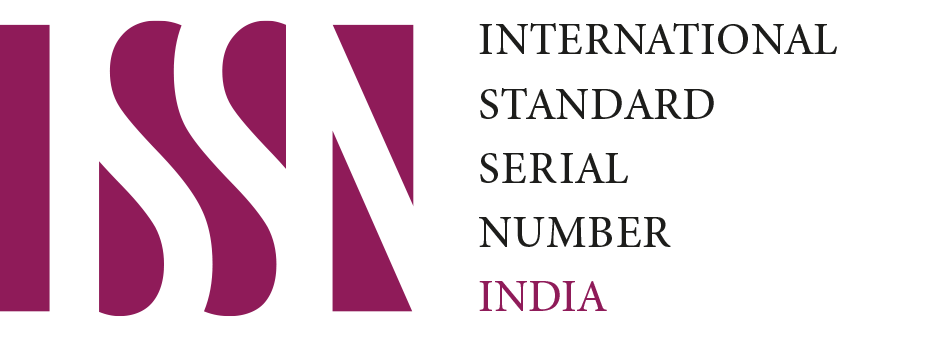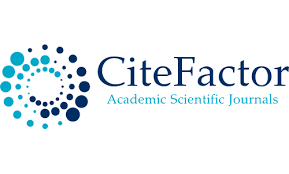ARTIFICIAL INTELLIGENCE TECHNIQUES IN MULTIMEDIA
Amer Abu-Jassar
Ajloun National University, Information Technology College, Ajloun, Jordan
Anas Albattiri
Ajloun National University, Information Technology College, Ajloun, Jordan
Osama Ameerah
Ajloun National University, Information Technology College, Ajloun, Jordan
##semicolon## Artificial Intelligence (AI), Multimedia, Machine Learning, Deep Learning, Natural Language Processing (NLP).
सार
Artificial Intelligence (AI) has emerged as a transformative force in the field of multimedia, revolutionizing content creation, analysis, and delivery across various industries. This paper explores the integration of AI techniques in multimedia applications and its profound implications for enhancing creativity and efficiency. Drawing upon existing literature and case studies, the paper examines the impact of AI-powered multimedia technologies on industries such as entertainment, advertising, education, and healthcare. Furthermore, the paper identifies key challenges and opportunities associated with the integration of AI and multimedia, including technical limitations, ethical considerations, and societal implications.
##submission.citations##
Deineko, Zh., Kraievska, N., & Lyashenko, V. (2022). QR Code as an Element of Educational Activity. International Journal of Academic Information Systems Research (IJAISR), 6(4), 26-31.
Sotnik, S., Mustafa, S. K., Ahmad, M. A., Lyashenko, V., & Zeleniy, O. (2020). Some features of route planning as the basis in a mobile robot. International Journal of Emerging Trends in Engineering Research, 8(5), 2074-2079.
Lyubchenko, V., & et al.. (2016). Digital image processing techniques for detection and diagnosis of fish diseases. International Journal of Advanced Research in Computer Science and Software Engineering, 6(7), 79-83.
Al-Sherrawi, M. H., Lyashenko, V., Edaan, E. M., & Sotnik, S. (2018). Corrosion as a source of destruction in construction. International Journal of Civil Engineering and Technology, 9(5), 306-314.
Lyashenko, V. V., Deineko, Z. V., & Ahmad, M. A. Properties of wavelet coefficients of self-similar time series. In other words, 9, 16.
Baranova, V., Zeleniy, O., Deineko, Z., & Lyashenko, V. (2019, October). Stochastic Frontier Analysis and Wavelet Ideology in the Study of Emergence of Threats in the Financial Markets. In 2019 IEEE International Scientific-Practical Conference Problems of Infocommunications, Science and Technology (PIC S&T) (pp. 341-344). IEEE.
Dobrovolskaya, I., & Lyashenko, V. (2013). Interrelations of banking sectors of European economies as reflected in separate indicators of the dynamics of their cash flows influencing the formation of the resource potential of banks. European Applied Sciences, 1-2, 114-118.
Kots, G. P., & Lyashenko, V. (2012). Banking sectors of the economies of European countries in the representation of statistical interrelation between indices that characterize their development. European Applied Sciences, 1, 461-465.
Kuzemin, A., & Lyashenko, V. (2009). Methods of comparative analysis of banks functioning: classic and new approaches. Information Theories & Applications, 16(4), 384-396.
Mustafa, S. K., Yevsieiev, V., Nevliudov, I., & Lyashenko, V. (2022). HMI Development Automation with GUI Elements for Object-Oriented Programming Languages Implementation. SSRG International Journal of Engineering Trends and Technology, 70(1), 139-145.
Nevliudov, I., Yevsieiev, V., Lyashenko, V., & Ahmad, M. A. (2021). GUI Elements and Windows Form Formalization Parameters and Events Method to Automate the Process of Additive Cyber-Design CPPS Development. Advances in Dynamical Systems and Applications, 16(2), 441-455.
Lyashenko, V., Matarneh, R., & Kobylin, O. (2016). Contrast modification as a tool to study the structure of blood components. Journal of Environmental Science, Computer Science and Engineering & Technology, 5(3), 150-160.
Lyashenko, V. V., Matarneh, R., Kobylin, O., & Putyatin, Y. P. (2016). Contour Detection and Allocation for Cytological Images Using Wavelet Analysis Methodology. International Journal, 4(1), 85-94.
Sotnik, S., & Lyashenko, V. (2022). Prospects for Introduction of Robotics in Service. Prospects, 6(5), 4-9.
Lyashenko, V., & et al. (2023). Automated Monitoring and Visualization System in Production. Int. Res. J. Multidiscip. Technovation, 5(6), 09-18.
Kuzomin, O., Ahmad, M. A., Kots, H., Lyashenko, V., & Tkachenko, M. (2016). Preventing of technogenic risks in the functioning of an industrial enterprise. International Journal of Civil Engineering and Technology, 7(3), 262-270.
Al-Sharo, Y. M., Abu-Jassar, A. T., Sotnik, S., & Lyashenko, V. (2023). Generalized Procedure for Determining the Collision-Free Trajectory for a Robotic Arm. Tikrit Journal of Engineering Sciences, 30(2), 142-151.
Al-Sharo Y., & et al. (2023). A Robo-hand prototype design gripping device within the framework of sustainable development. Indian Journal of Engineering, 2023, 20, e37ije1673.
Orobinskyi, P., Petrenko, D., & Lyashenko, V. (2019, February). Novel Approach to Computer-Aided Detection of Lung Nodules of Difficult Location with Use of Multifactorial Models and Deep Neural Networks. In 2019 IEEE 15th International Conference on the Experience of Designing and Application of CAD Systems (CADSM) (pp. 1-5). IEEE.
Lyashenko, V., Laariedh, F., Ayaz, A. M., & Sotnik, S. (2021). Recognition of Voice Commands Based on Neural Network. TEM Journal: Technology, Education, Management, Informatics, 10(2), 583-591.
Mousavi, S. M. H., Lyashenko, V., & Prasath, S. (2019). Analysis of a robust edge detection system in different color spaces using color and depth images. Компьютерная оптика, 43(4), 632-646.
Orobinskyi, P., Deineko, Z., & Lyashenko, V. (2020). Comparative Characteristics of Filtration Methods in the Processing of Medical Images. American Journal of Engineering Research, 9(4), 20-25.
Mousavi, S. M. H., Victorovich, L. V., Ilanloo, A., & Mirinezhad, S. Y. (2022, November). Fatty Liver Level Recognition Using Particle Swarm optimization (PSO) Image Segmentation and Analysis. In 2022 12th International Conference on Computer and Knowledge Engineering (ICCKE) (pp. 237-245). IEEE.
Tahseen A. J. A., & et al.. (2023). Binarization Methods in Multimedia Systems when Recognizing License Plates of Cars. International Journal of Academic Engineering Research (IJAER), 7(2), 1-9.
Davies, K., Ghosal, S. (1996). A Framework for Multimedia Information Systems. In Proceedings of the 6th ACM SIGMM international workshop on Multimedia information systems.
Bishop, C. M. (2006). Pattern recognition and machine learning. Springer.
Krizhevsky, A., Sutskever, I., Hinton, G. E. (2012). ImageNet classification with deep convolutional neural networks. In Advances in neural information processing systems.
Lyashenko, V., Kobylin, O., & Selevko, O. (2020). Wavelet analysis and contrast modification in the study of cell structures images. International Journal of Advanced Trends in Computer Science and Engineering, 9(4), 4701-4706.
Lyashenko, V., Kobylin, O., & Baranchykov, Y. (2018, October). Ideology of Image Processing in Infocommunication Systems. In 2018 International Scientific-Practical Conference Problems of Infocommunications. Science and Technology (PIC S&T) (pp. 47-50). IEEE.
Lyashenko, V. V., Babker, A. M., & Lyubchenko, V. A. (2017). Wavelet Analysis of Cytological Preparations Image in Different Color Systems. Open Access Library Journal, 4, e3760.
Abu-Jassar, A. T., Attar, H., Lyashenko, V., Amer, A., Sotnik, S., & Solyman, A. (2023). Access control to robotic systems based on biometric: the generalized model and its practical implementation. International Journal of Intelligent Engineering and Systems, 16(5), 313-328.
Simonyan, K., Zisserman, A. (2014). Very deep convolutional networks for large-scale image recognition. arXiv preprint arXiv:1409.1556.
Hershey, S., Chaudhuri, S., Ellis, D. P., Gemmeke, J. F., Jansen, A., Moore, R. C., ... & Zhang, Y. (2017). CNN architectures for large-scale audio classification. In 2017 IEEE International Conference on Acoustics, Speech and Signal Processing.
Devlin, J., Chang, M. W., Lee, K., Toutanova, K. (2018). BERT: Pre-training of Deep Bidirectional Transformers for Language Understanding. In Proceedings of the 2019 Conference of the North American Chapter of the Association for Computational Linguistics: Human Language Technologies.
Cheng, Z., Dong, L., Lapata, M. (2019). ARAE: Adversarially Robust Audio Exemplar-based Text-to-Speech Synthesis. In Proceedings of the 57th Annual Meeting of the Association for Computational Linguistics.
Zhu, H., Huang, W., Li, Z., Huang, D. (2020). Deep Adversarial Sequence Learning for Visual Dialogues. In Proceedings of the 58th Annual Meeting of the Association for Computational Linguistics.
Johnson, R., Khoshgoftaar, T. M., Raimondo, K. (2018). AI and deep learning in the healthcare industry. Journal of Computer Information Systems, 58(4), 376-384.
Esteva, A., Kuprel, B., Novoa, R. A., Ko, J., Swetter, S. M., Blau, H. M., & Thrun, S. (2017). Dermatologist-level classification of skin cancer with deep neural networks. Nature, 542(7639), 115-118.’
Abu-Jassar Amer Tahseen. Artificial intelligence in multimedia: enhancing creativity and efficiency / Amer Tahseen Abu-Jassar, Anas Albattiri, Osama Ameerah // Поліграфічні, мультимедійні та web-технології: тези доп. IX Міжнар. наук.-техн. конф. (14-18 травня 2024, м. Харків). – Харків: ТОВ «Друкарня Мадрид», 2024. Т. 1. – C. 213-214

















